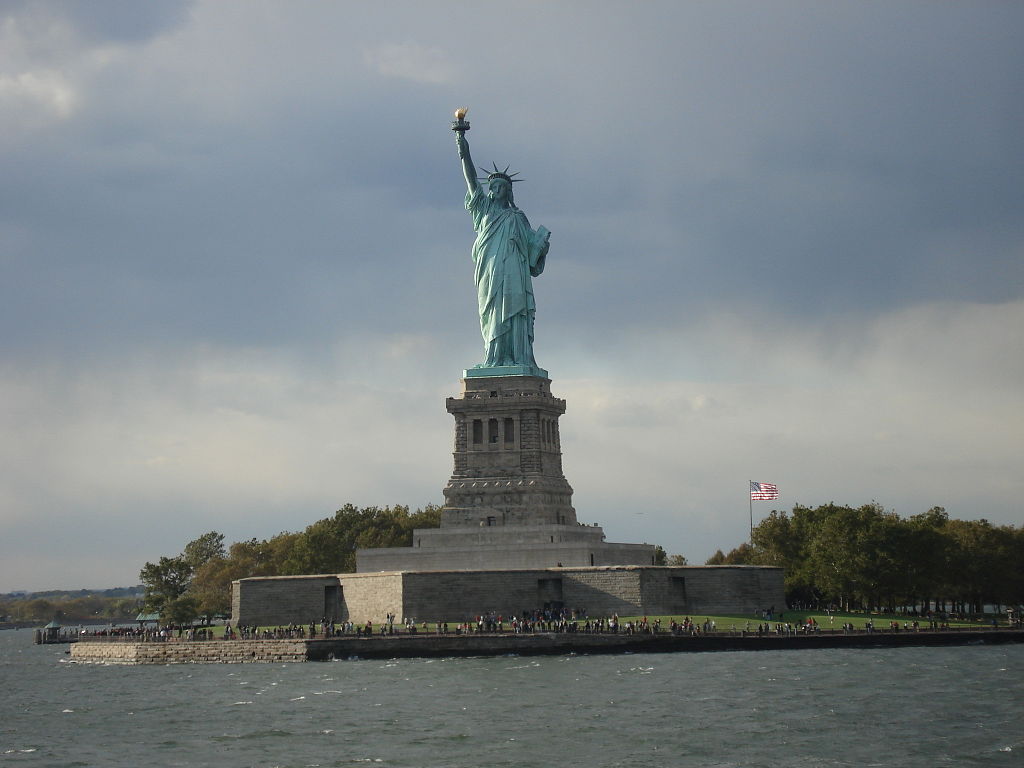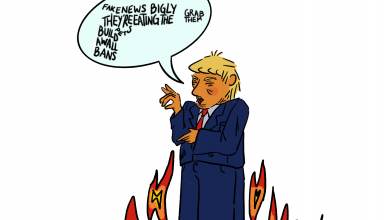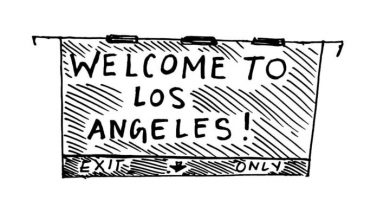Metamorphosis of the American Dream and its Unceasing Lure

The Statue of Liberty via Wikipedia Commons / Public Domain
The American Dream is an ideology and philosophy that is considered integral to the identity of the United States and has gone on to shape national debates, government policies, and global propaganda. Often spoken of in conjunction with the values of democracy, liberty, and personal rights, the dream is supposed to stand for freedom and equal economic opportunity for prosperity and success. As coined in 1931 by James Truslow Adams, “…it is not a dream of motor cars and high wages merely, but a dream of social order in which each man and each woman shall be able to attain to the fullest stature of which they are innately capable.”
It also furthers the idea of upward social mobility for families and their subsequent generations achievable through hard work in the presence of few social barriers. Drawing nearly 46.6 million immigrants in total as of 2015, these ideals have long lured crowds from countries with unstable economies, abject poverty, drug violence, and subjugation of minorities among other ills. They have also served as an example to nations seeking to define their own ‘dreams’ like Russia, China and Australia.
This national ethos has, through the ages, molded and been molded by government policies. Furthering the cause of equal opportunities, over time the pursuit of this ideal of the American Dream allowed for the extension by legislation to women through suffrage, to minorities during the civil rights movement, and most recently, to individuals of all sexual orientations through the legal right to wed. However, this journey of providing for all has been far from perfect. The resounding call for women’s suffrage was not all-encompassing. Women of colour were effectively disenfranchised until the 1960s. Tensions due to race relations are simmering even today. African-Americans were a target of Nixon’s war on drugs in the 1970s, and have been driven in the current political atmosphere to voice their protests through the #blacklivesmatter and #TakeAKnee movements. Furthermore, other minorities like transgenders have frequently experienced discrimination including refusal of a basic amenity like health care and the concept of marriage equality has seen retaliation from several states since its inception.
Apart from these cultural shortcomings that have altered our perception of the American Dream, this philosophy has also been shaped by multiple economic factors, two of which being – growing inequality, and the association of opportunities to material wealth such as home ownership.
Economic inequality has been touched upon by many politicians across both sides of the aisle. While former President Obama called it “the defining challenge of our time,” Senator Marco Rubio of Florida addressed America as the land of “the haves and soon-to-haves,” both seeking through varying policies, such as – higher taxes for corporates, trickle-down economy, raising minimum wage, increasing unemployment benefits – to partition the pie fairly.
The PEW charitable trust studied this inequality in 2008 dollars, and found that family wealth distribution of the generation had increased for the upper class by 27%, as compared to their parents’ generation, while it had reduced for the middle and lower classes. An article in Science magazine looked at the effect of this unequal spread of economic growth on the social mobility aspect of the American Dream, using models and data from the US Census survey to show that absolute upward mobility has reduced from 90% for children born in the 1940s to 40% for those born in the 1980s. It furthers the argument that reducing this gap would require a more just dispersion of the current growth in GDP rather than an upward rise in the total GDP growth rate.
While Americans acknowledge the growing rift in the top and bottom quartiles of society, as of 2015, only five percent think of this as a major problem of concern. There exists an inherent bias towards upward compared to downward mobility with a highly prevalent belief that the system is just and fair, and that if you play by the rules and work hard, you are rewarded. However, numbers establish that while reaching for the higher quartiles of the economic pie is overestimated, the reverse is underestimated.
This does not imply that the “rags-to-riches” stories are impossible, but, as we are entering times with more civil liberties, freedoms, and social awareness in comparison to the past, economic opportunities for the general populace seem lesser than perceived. While there have been commendable stories that have beaten several odds to jump the ranks, making them the sole focus of the narrative, tears the conversation away from making the Dream more accessible. The glamour of the few discourages the examination of the role that institutionalized racism and bias against women, LGBTQ people and other minorities plays in disillusioning many and widening the gap.
One other cause for the alienation of the American Dream for many has been the rise and fall of its association with the housing market. With growing emphasis since the 1970s-1980s, several federal policies facilitated acquisition of homes. In 2003, President George W. Bush signed into law the American Dream Downpayment Assistance Act, in line with his agenda to push for expansion of home ownership. In 2017, Ben Carson, the secretary of housing and urban development, equated the two, while lamenting that millennials are losing out on the dream.
However, as on one hand homeownership was forming to be a significant route to family wealth in the 20th century, on the other, laws about redlining meant that route was made unavailable to African-Americans. With banks refusing to give loans, and advent of policies designed to contain “the spread of Negroes,” they were left with few options to finance their homes leading to deteriorated properties and deserted neighborhoods. Its effects have trickled down to 2010, when the trend of seller-financing homes is still active.
While disparity in homeownership is indicative of economic inequality, after the 2008-2009 housing bubble burst, buying a house to develop equity for future generations may no longer be an integral part of the measure of social mobility. Indeed, Pew Research Center showed that from 2006 to 2016, the number of household heads who rent their homes had increased.
This changing conception of the American Dream begets the question: what do civilians within and without the country think of its current narrative? Results from different polls suggest that while many believe that there is an increasing amount of obstacles to realizing the dream, a significant number still have faith in its fulfilment through hardwork and effort.
The reverence for and the sanctity of the American Dream today may not remain as it was originally intended. With systemic racism and disenfranchisement, many have been robbed of the “equal opportunities” that they were promised. Despite these failings, with America’s stature in the world, this ideology continues to draw millions of immigrants to its shore from all over. It is deeply saddening that in the current political atmosphere, some of them will never make it to the land they aspire to be a part of and toil in.
The Dream is not merely a tool for personal benefit. Increased accessibility to the same, is in the interest of the United States and its economic growth.




